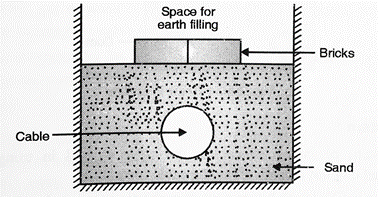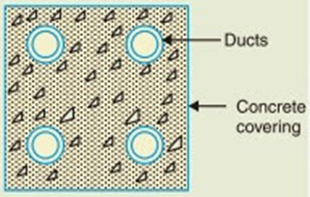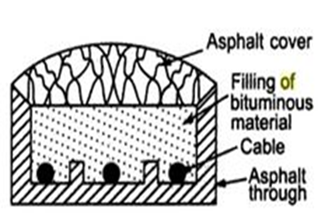
Nature conservation, natural objects, aesthetics and space make laying cables underground unavoidable and necessary. Underground cable laying has added benefits in the form of reduced transmission loss and reduced risk of service supply loss in cases of extreme weather.
Contents
What is underground cable laying?
In areas where space for cables is limited and crunched, especially the urban regions, underground laying of cables is an efficient method. Telecommunications or electric power can be transmitted through underground cables. Data is transmitted from one point to another using cable laid on the ground instead of the ones hanging from poles and towers in an underground cable system.
In comparison to overhead cables, underground cables are not visible to the naked eye and hence, retain the location’s aesthetic beauty. To ensure this, proper trenches need to be dug and the entire process needs to be carried out systematically to ensure success and minimum service requirements.

Benefits of underground cable laying
Climate change has made extreme weather conditions more common. In order to have an uninterrupted power supply and telecommunication in place, it is important that our infrastructure is planned and equipped to survive the harsh weather conditions. The following benefits make underground cable systems the preferred choice:
- Longer lifespan – Underground cables have a much greater life expectancy than aerial cables.
- Reduction in maintenance costs – Less exposure to nature’s fury like falling tree branches, strong winds and rain lead to fewer maintenance requirements.
- Accident prevention- Aerial cables can collapse on buildings and cars and put anyone near them at the risk of electric shocks. In this regard, underground cable laying is safer.
- Continuous service – Protected from external factors, underground cables provide uninterrupted power or service.
- Zero obstruction – Underground cable systems are completely out of sight and cause zero obstruction to properties.
- Minimum space requirement – Aerial cables require a lot of space for installing poles whereas underground cables require a much-limited band of land.
The Procedure & Installation of Underground Cable Laying
The effectiveness and efficiency of an underground cable system depend on proper cable laying, quality of cable joints and branch connections. There are three methods of underground cable laying. The procedure followed in each method is as follows:
Direct laying
This method requires digging a 1.5m deep and 0.45m wide trench which is then covered with a layer of sand. The cables are laid in the trench and covered with a 10 cm thick layer of sand. To protect against mechanical injury the trench is then covered with bricks and other materials.
If more than one cable is required to be laid in a trench then a horizontal or vertical inter-axial spacing of 30 cm is provided to prevent mutual heating.

Advantages:
- The simplest and cheapest method of underground cable laying
- The heat generated gets dispersed in the ground.
Disadvantages:
- High maintenance cost
- Pointing out accurate locations of faults is difficult
- Cable network alterations are difficult.
Draw in system
Ducts or conduits of cast iron or concrete or glazed stone with manholes are placed at suitable locations along the cable route. The manholes are used for pulling the cable in position.

Advantages:
- Manholes make additions, repairs and maintenance easy
- Low maintenance cost
- Mechanical protection lowers the occurrence of faults.
Disadvantages:
- Installation cost is high
- Low heat dispersion due to grouped cables.
Solid system
Underground cables are laid in open pipes or troughs along the cable route. The troughs are usually made of asphalt, stoneware or cast iron. Asphaltic compound is used for filling the troughs once the cable is laid in position.

Advantages:
- Strong mechanical protection
Disadvantages
- Skill and labour requirements result in high costs
Challenges of underground cable laying
The various challenges in the process of laying underground cables are as follows:
- High installation cost: The initial installation cost for an underground cable system is high as costs for restoration of roads and surrounding infrastructure add to the total cost.
- Permissions and approvals: Before starting with the digging process, a range of approvals need to be obtained from relevant authorities.
- Cumbersome modifications: Inability to locate lines and particular sections makes making additions or modifications to the line tedious.
- Obstacles in cable route: The cable route needs to be designed keeping in mind any obstacles that may be there in the route.
- Insulation requirements: Layers of insulation are needed for underground cables to withstand the high voltage flows.
FAQs
What is the minimum depth for cable laying below the ground?
The minimum depth for cable laying below the ground varies according to the voltage capacity of the cable. The depth should be atleast 0.9m for 3.3kV to 11kV cables, 1.05m for 22kV to 33kV cables. The minimum depth of a low voltage cable should be 0.75m.
What is the cable laying method?
The dependability of a cable network depends on the laying method and attachment of fittings like cable end boxes, joint, branch connectors, etc. Laying method defines the approach that will be followed in terms of digging of trenches, fitting of ducts and positioning of cables. There are basically three methods of laying cables underground which are direct laying, draw-in and solid system.
How deep should the cable be buried underground?
The depth requirements vary according to the topography of the terrain. For road crossings and drainage ditches that are yet to be finished, the standard depth varies from 30 to 42 inches. If the ground remains frozen for extended periods of time, then the depth should be at least 30 inches. Roadway crossings require deeper digging with a standard depth of 42 inches.
What should be the normal depth of laying cables?
The normal depth of laying cables is influenced by climate conditions and terrain. It ranges from 30 inches to 42 inches depending on the conditions.
What is the advantage of direct laying of underground cables?
Direct laying of underground cable systems has the following benefits:
- Fast construction of cable network
- Low investment
- Fast heat dispersion
- Clean and safe method with cable protected from external disturbances.














